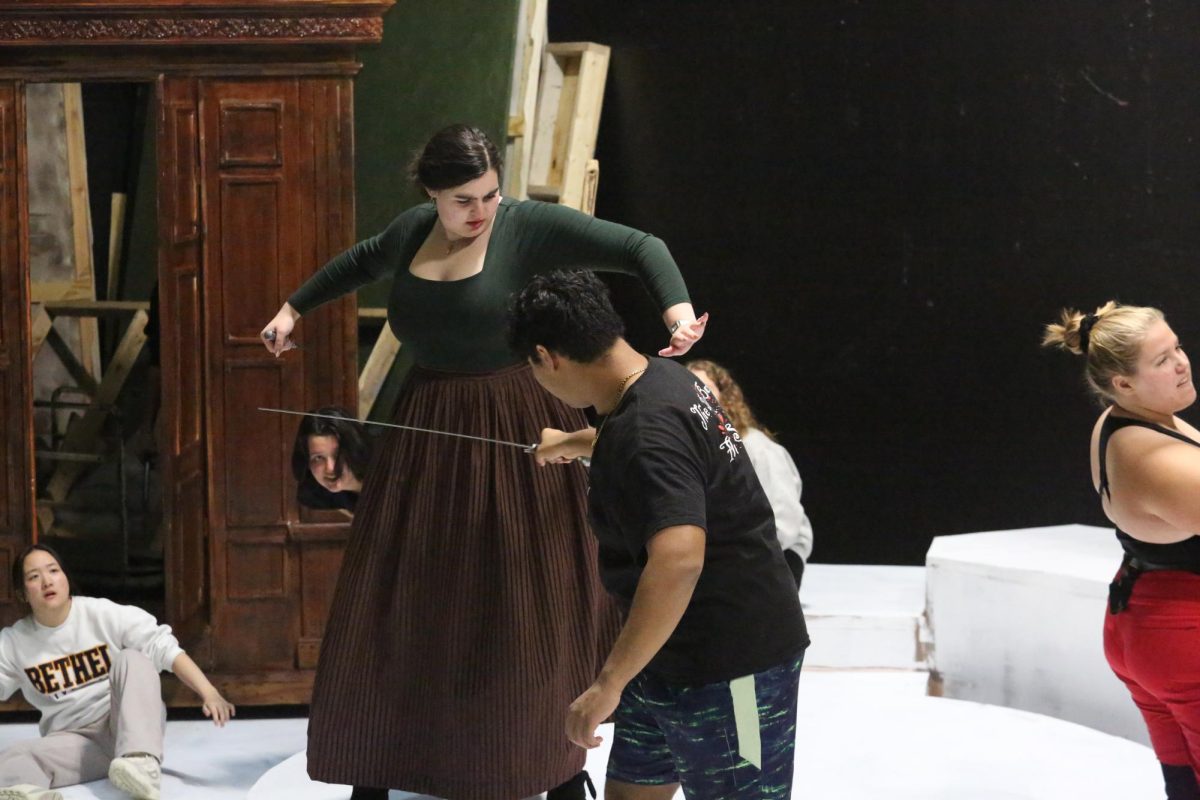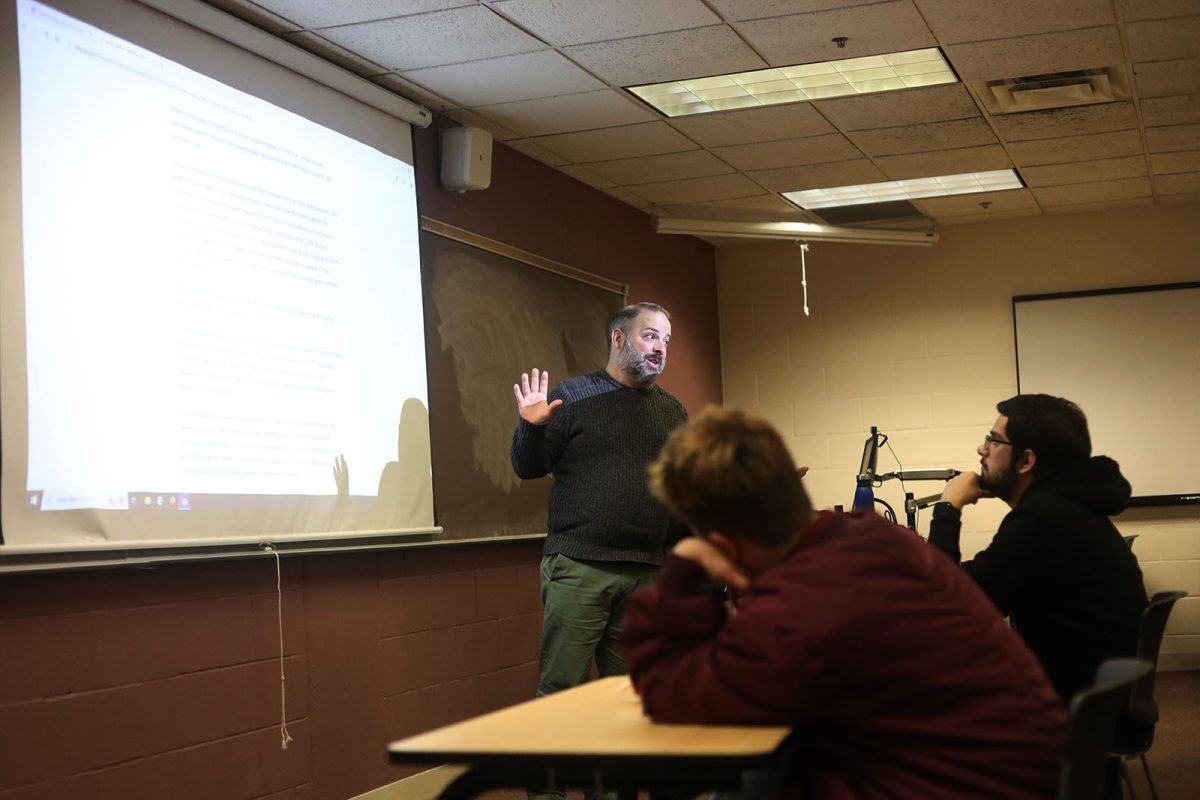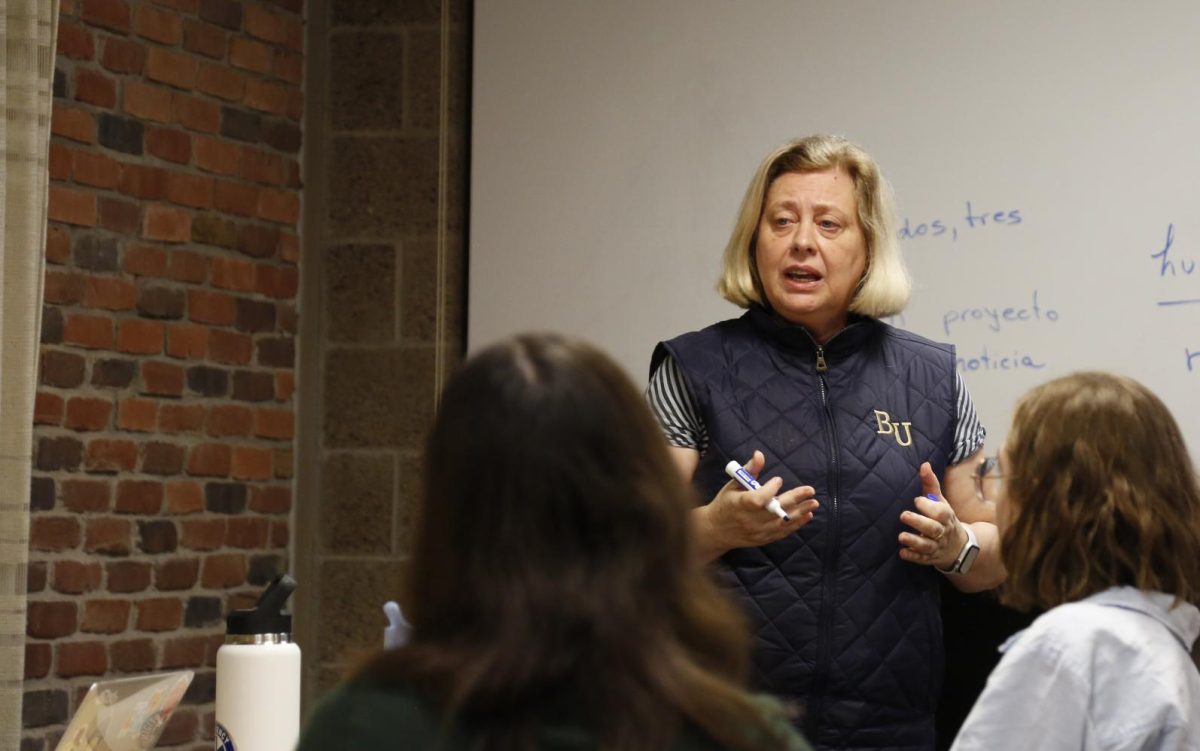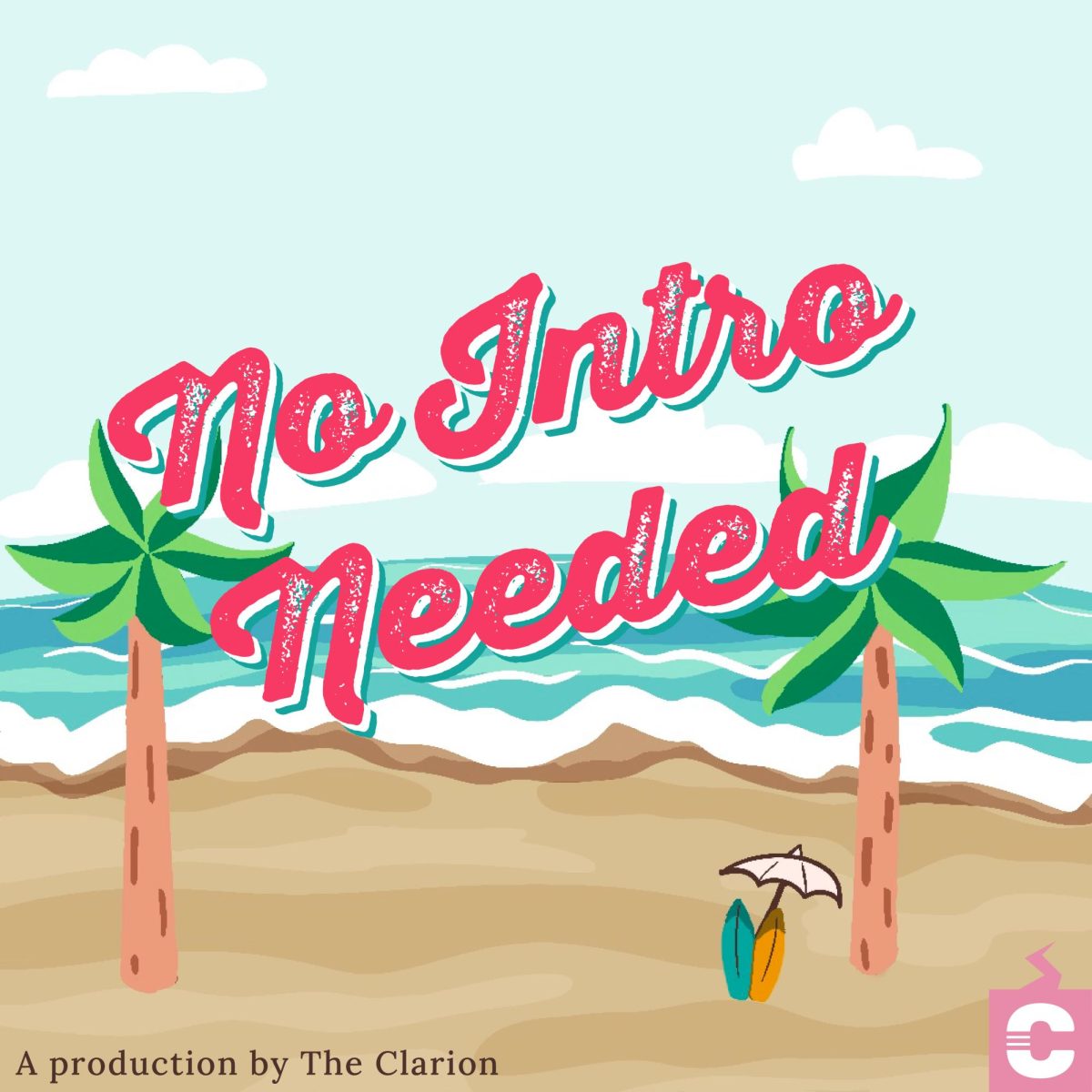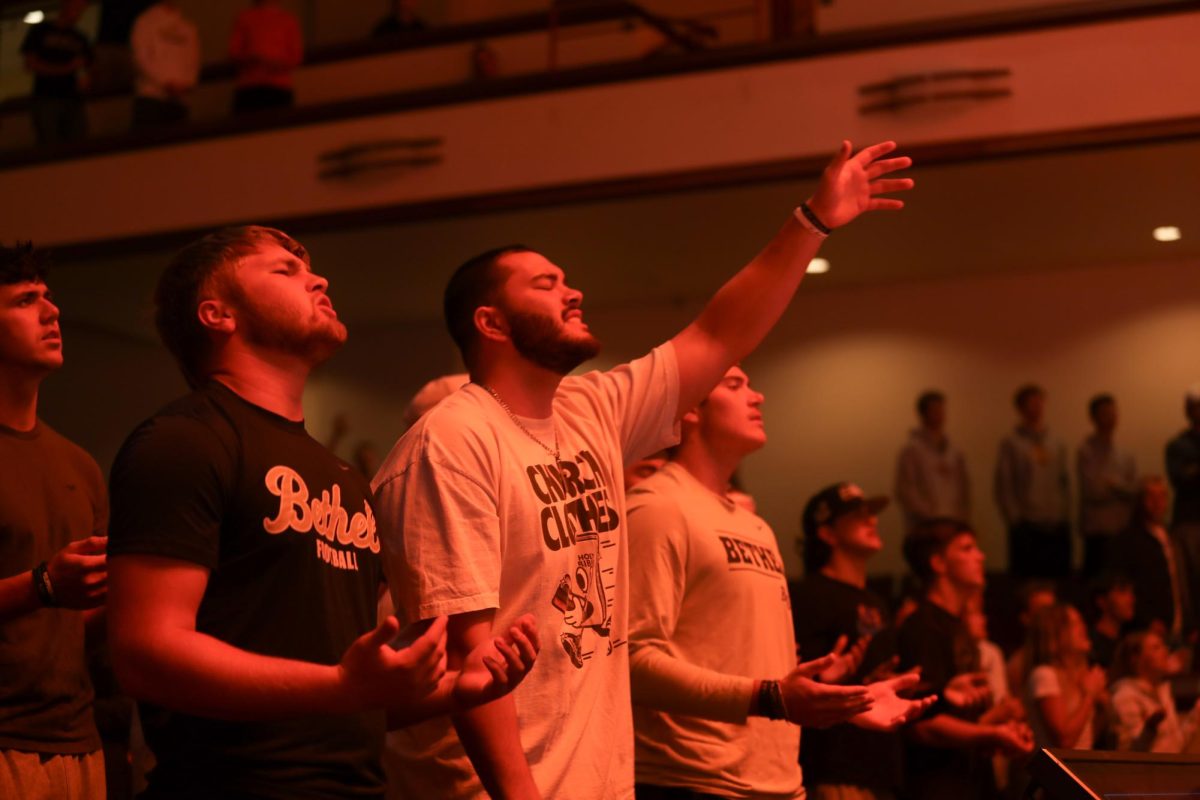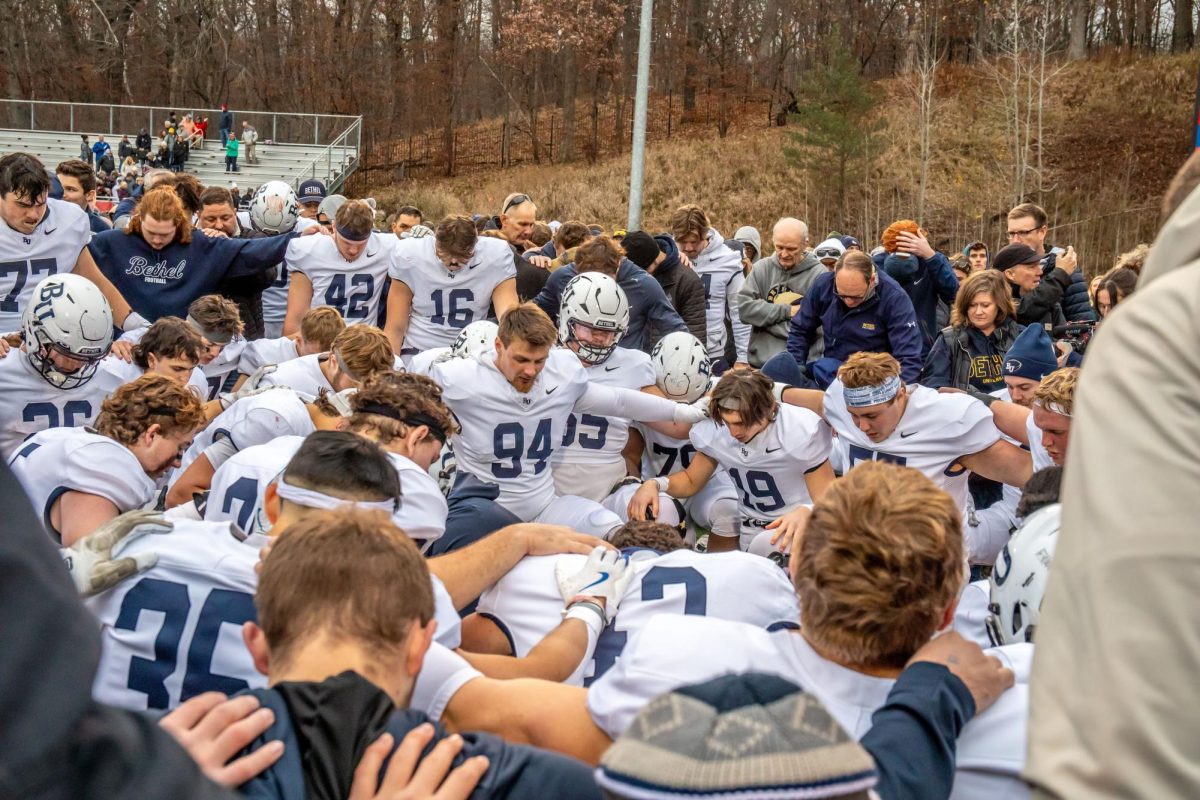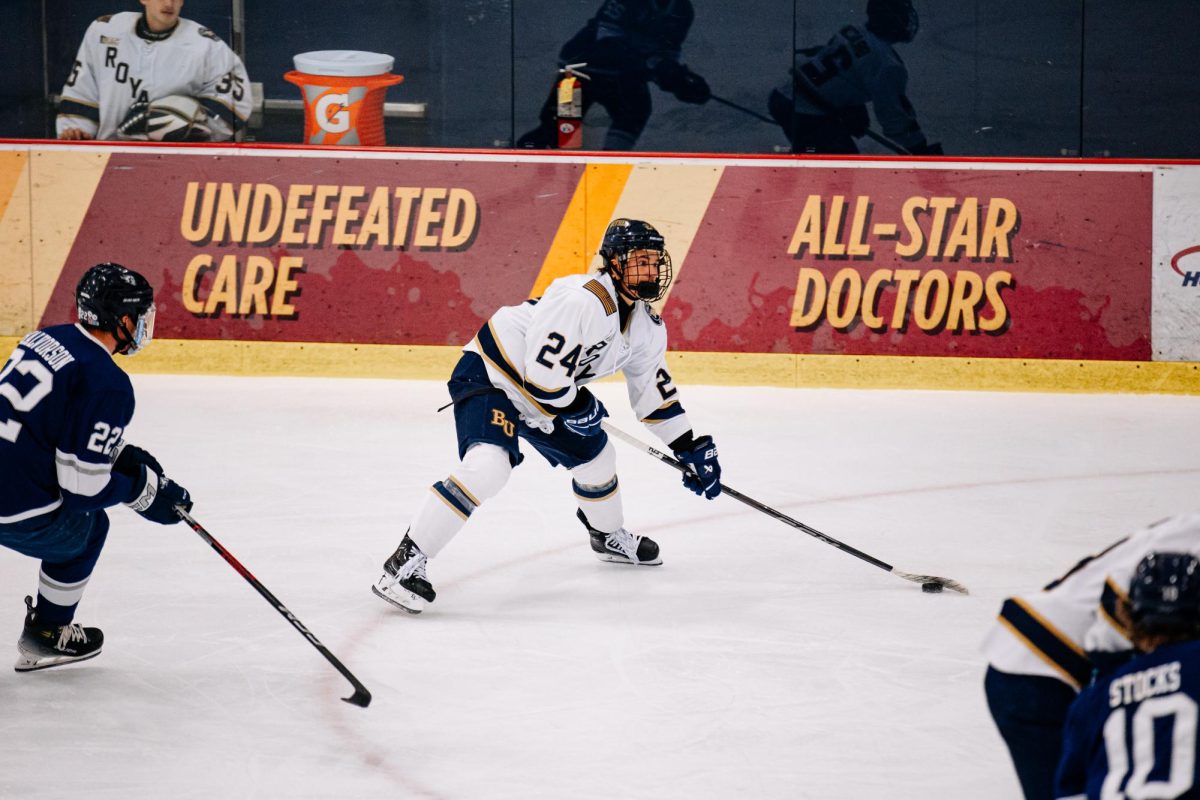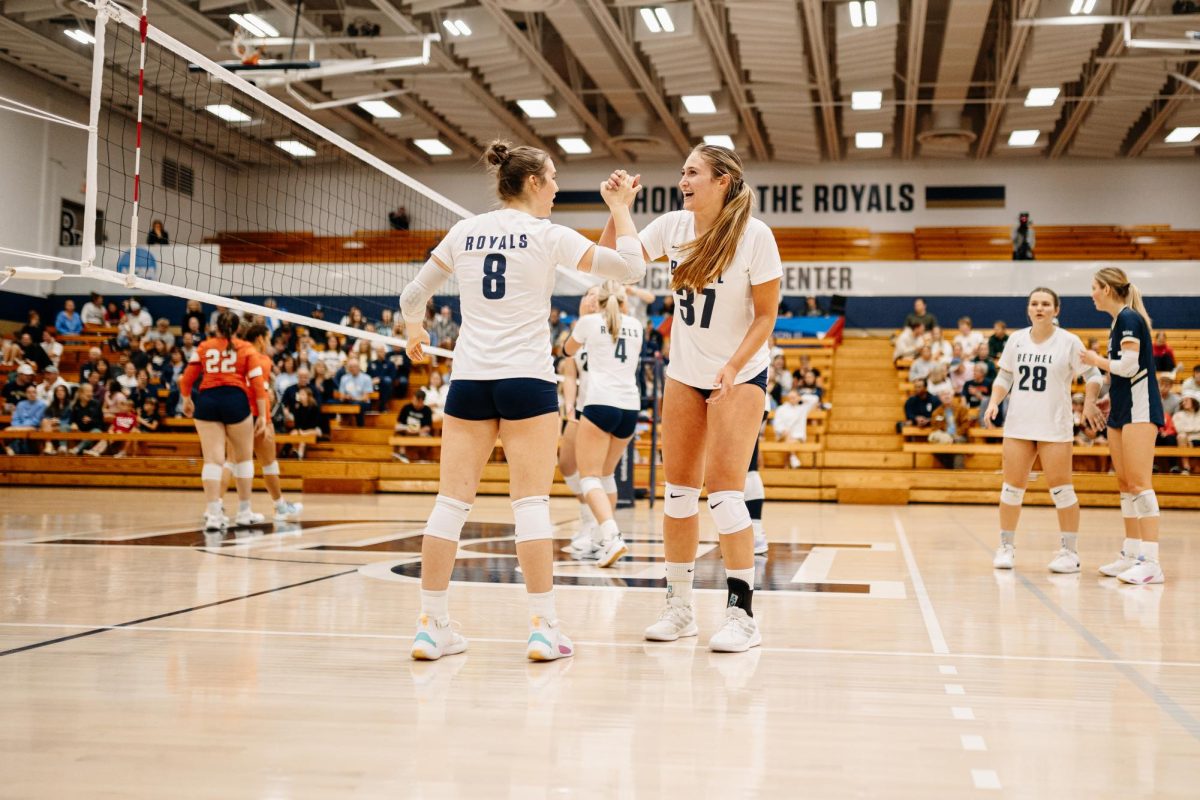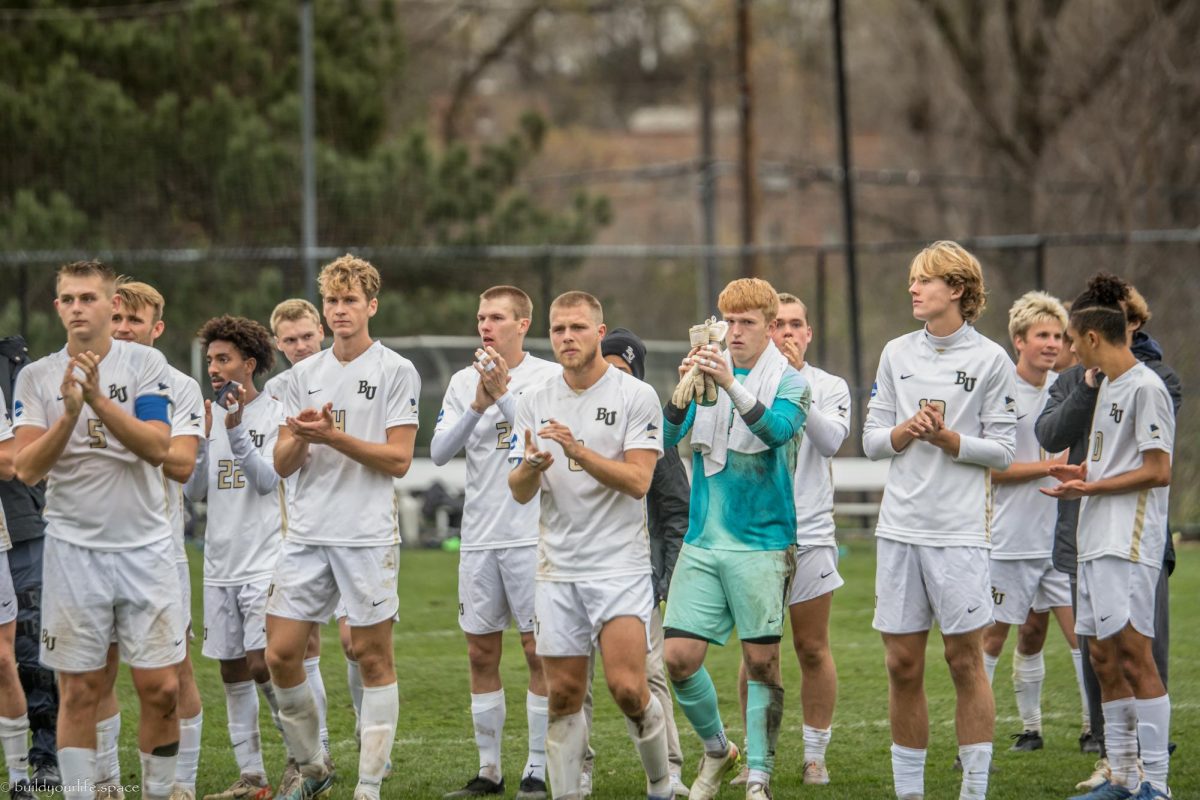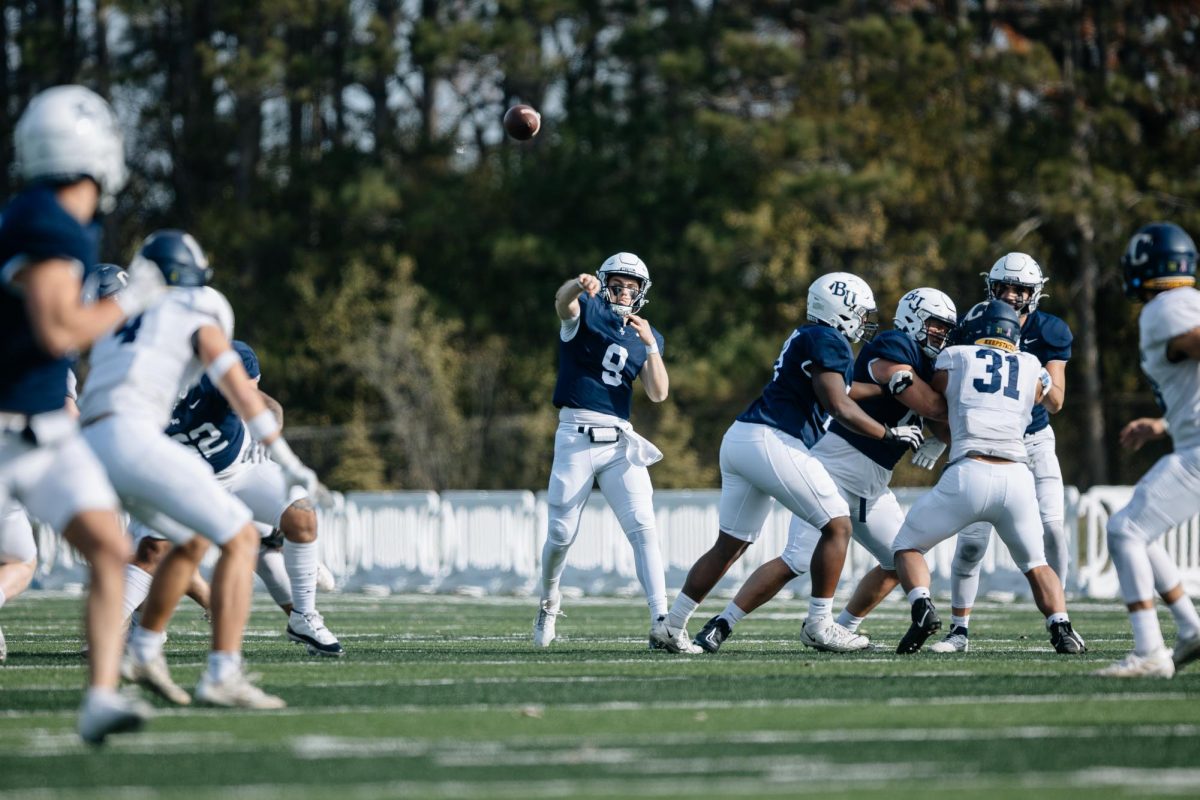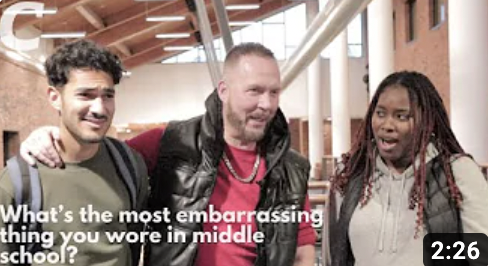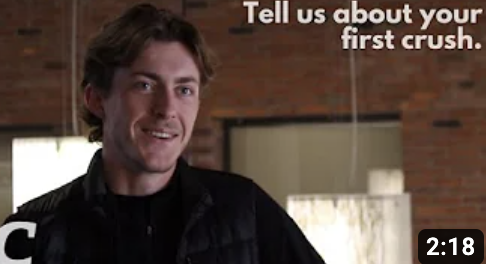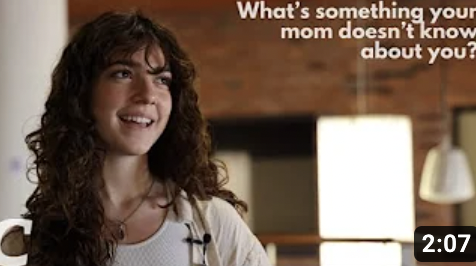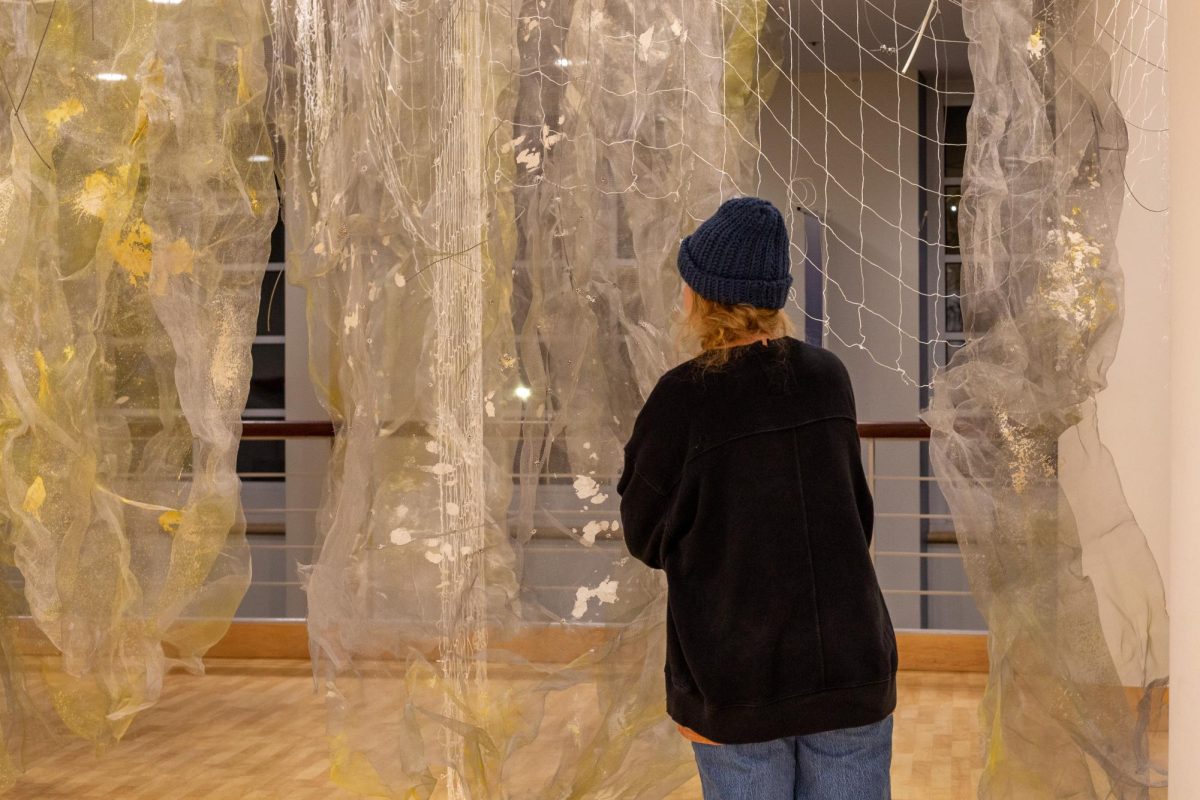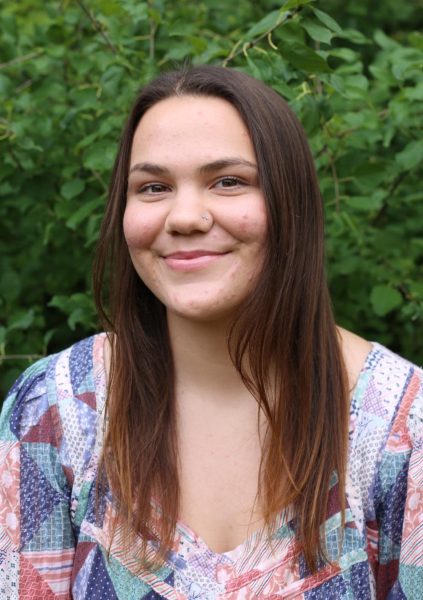Olga Lah took a few steps back. Her arms crossed and head tilted as she examined the extra cable wire hanging on one of the white walls of the Olson Gallery at Bethel University. For the last couple of days, she had been working on setting up her exhibit, “The Widening Hold.”
The main part of the project was finished. Large pieces of mesh hung from the ceiling with specks of acrylic paint, spray paint and ceiling foam sticking to it. Aluminum screen and trellis netting create layers symbolizing the overlapping of art and faith. It was a place of stillness and mystery, the afternoon sun shining through.

Now, Lah was using leftover materials to create an unplanned part of the work, something she could play around with. Soon, at her public artist talk, her work would be displayed for many to see.
But what would they see? That was a question Lah herself didn’t know the answer to, but she knew the end product would be worth it.
“I think there’s this sense that I want to create for people an experience [of] something beyond themselves,” Lah said. “And to experience wonder.”
Lah is a Korean American artist born and raised in Los Angeles. She received a B.A. in Studio Art and Art History from the University of California and an M.A. in Theology from Fuller Theological Seminary. With her art, Lah explores ideas such as awe and wonder and how those themes point to a higher reality. She uses recyclable materials like sponges, reflective plastic and container lids to invite people to discover different ways of looking at art, the way she does while creating it. Her work can be found displayed all over California, but her journey, a lot like her art, didn’t go as planned.
Lah grew up in Torrance, California, about 30 minutes outside of central Los Angeles. Both her parents were immigrants from Korea. They spent most of their time working at the small string of businesses they owned, leaving Lah and her two sisters home alone. So while her parents were off working at the liquor store, the dry cleaner, the market or maybe the butcher shop, Lah and her sisters were left to fill their own time.
They watched cartoons, read books, smashed video game control buttons and played games with neighborhood kids. For Lah, all this free time and boredom led to time drawing picture after picture, cutting out pieces from magazines to create collages on old shoe boxes and making pretty white clothes out of Kleenex tissues for her dolls.
Lah’s mother was a big supporter of her artistic endeavors. Signing Lah up for classes for clay making and drawing, she only imagined this as a fun hobby for her daughter and was really just focused on Lah’s piano lessons.
Despite spending so much time making art as a child, Lah had never even thought about becoming an artist. She thought she would become a broadcast journalist.
Lah sat in front of the flickering TV, eyes wide with admiration. It was time for the CBS Newsbreak with Connie Chung.
Connie Chung, a woman on TV who looked like her.
“In the world I lived in at the time, there were not a lot of people who looked like me in public roles like that,” Lah said. “So when I saw her, I thought, ‘Oh, I think I could do that.’”
Along with art, Lah enjoyed writing and reading. Writing assignments were her favorite, and the idea of becoming a broadcast journalist seemed like a possibility. But when her mother died suddenly from a brain aneurysm right before she entered high school, she and her family were left in shock and unsure what to do with her gone. So when it came to graduation and thinking about what she’d study in college, Lah’s father didn’t have much of an opinion about it. She had to ask herself, “What am I really interested in?”
It wasn’t writing that came to mind, but visual arts.
After receiving her double B.A., Lah wanted to continue using her art skills in education. To do that, she wanted to go to the best school to learn. She applied to Harvard’s Graduate School of Education to study art education and policy — and got in. Lah was expecting her family to continue to be supportive in this big life decision, but she was surprised to hear that they didn’t want her to go.
“They expected me to come back and live with my father,” Lah said. “To take the roles that my sisters had done while I was growing up, which was taking care of my dad in terms of household duties and helping him out with the market he ran. They needed a break.”

And that’s what Lah did. She decided the right thing to do was to stay in California.
Instead of learning how to teach students how to bring their art to life or how to work with schools, community centers and cultural organizations, she was making sure dinner was on the table at 8:30 every night and counting out change at the cash register in her father’s store, El Bajio Market and Carniceria. Deep down, she felt disappointed that she wasn’t able to follow her dreams at Harvard, which led her to closing the doors of her art dreams. After a year of being with her father, she began asking herself the same question she had been asking before graduating high school.
This time, she was interested in what spirituality and faith looked like in an academic setting. So she applied to a theology seminary. She got in, but it wasn’t easy.
She continued to live with her father during her two-year seminary program at Fuller Theological Seminary. It was a busy two years, but once she graduated and got married, she was able to leave home and begin working. She worked all sorts of different jobs: a receptionist in a law office, a filing clerk for a company, an administrative assistant in three different offices. Some of her jobs were involved with organizations that supported arts education in public schools, which were the office jobs Lah seemed to enjoy the most.
Art was slowly seeping back into her life, and it felt right.
Soon she was back in seminary, auditing in both art and theology classes. After about a 10-year break from creative endeavors, Lah was back to sketching. She also began experimenting with 3D art, finding her passion for sculptures and installations.
This time, at 30, she decided to stick with it.
Now Lah has her work displayed in various museums and galleries such as Orange County Museum of Art, Los Angeles Contemporary Exhibitions and the Los Angeles International Airport. She works as an artist full time. Looking back, she can see all those events in her life that made her journey to becoming an artist hard, but in the end helped her grow.
“I did have a later start as an artist,” Lah said, “because it wasn’t until that age I asked myself, ‘What do I actually want?’”
Growing up in a church and a Korean family, the idea of being subservient was heavily put on her. While trying to figure out her own life in her 20s, she was also trying to figure out how she could serve others. It didn’t help that Lah went through her 20s in the 2000s, a time she found to be ignorant of mental health problems.
At the time, Lah had no idea what mental health problems were. She assumed she was just being lazy and wasn’t good enough. There was one message that played on loop in her head: If I pull myself up, everything will be right.
When Lah was able to see her life in a different light, a weight seemed to be lifted off of her.
“I felt a really big sense of freedom,” Lah said. “I finally understood, ‘Oh this is not what life is all about at all.’ We’re actually called to joy … That played a big part in why I completely pivoted and became an artist.”
Now Lah owns her own studio, has had many interviews and articles written about her and her work and was recently in Minnesota to install another project at Bethel University.
Olson Gallery Director Michelle Wingard discovered Lah and her work through Instagram. The two also shared mutual friends in an organization called Christians and the Visual Arts. Eventually they connected online, and Wingard invited Lah to display her work.
“I had heard a lot of really great things about Olga’s work and that she’s really great to work with,” Wingard said. “Knowing she had both a background in studio art and theology, it seemed like a wonderful fit for our students to be able to learn from her.”
Along with displaying her work, Lah had agreed to talk to current art and design students in various classes. She spoke to them about the recyclable materials she uses in her art, inspirations behind works and the next steps after graduation.

On top of that, six students were given the opportunity to help Lah set up “The Widening Hold.” One student in particular, Zoe Vang, was able to be with Lah from the day she arrived at Bethel to the day she left.
Vang is a junior business and studio art major and has been the Olson Gallery assistant since last year. Vang hopes one day to be a gallery curator, so when Lah came to visit, Wingard thought it would give Vang the perfect opportunity to practice being a host. Vang was able to show Lah around Bethel, eat meals with her and provide help setting up the artwork.
“It’s my dream to work with artists,” Vang said. “Knowing that she is still so humble and so real through all her successes and learning about her faith amazes me because she’s still herself. Even after all the different awards and features, she’s still so personal.”
“The Widening Hold” will be on view at the Olson Gallery until April 21. Lah hopes it can be a place for the community of Bethel to be immersed and have a moment of contemplation — a place to step into abstraction and to be open, something she’s learned all throughout life.

